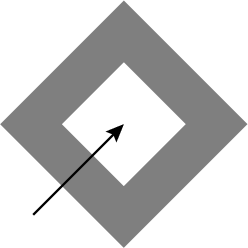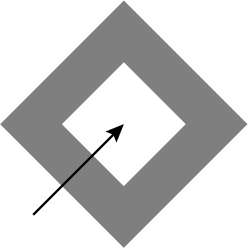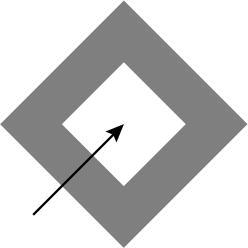Tractatenblad van het Koninkrijk der Nederlanden
| Datum publicatie | Organisatie | Jaargang en nummer | Rubriek | Datum totstandkoming |
|---|---|---|---|---|
| Ministerie van Buitenlandse Zaken | Tractatenblad 2006, 46 | Verdrag |
Zoals vergunningen, bouwplannen en lokale regelgeving.
Adressen en contactpersonen van overheidsorganisaties.
U bent hier:

| Datum publicatie | Organisatie | Jaargang en nummer | Rubriek | Datum totstandkoming |
|---|---|---|---|---|
| Ministerie van Buitenlandse Zaken | Tractatenblad 2006, 46 | Verdrag |
Aanvullend Protocol bij de Verdragen van Genève van 12 augustus 1949, betreffende de aanvaarding van een aanvullend onderscheidend embleem (Protocol III); (met Bijlage)
Genève, 8 december 2005
Protocole additionnel aux Conventions de Genève du 12 août 1949 relatif à l’adoption d’un signe distinctif additionnel
(Protocole III)
Les Hautes Parties contractantes,
(PP1) Réaffirmant les dispositions des Conventions de Genève du 12 août 1949 (en particulier les articles 26, 38, 42 et 44 de la Ire Convention de Genève) et, le cas échéant, de leurs Protocoles additionnels du 8 juin 1977 (en particulier les articles 18 et 38 du Protocole additionnel I et l’article 12 du Protocole additionnel II), concernant l’utilisation des signes distinctifs;
(PP2) Souhaitant compléter les dispositions mentionnées ci-dessus afin de renforcer leur valeur protectrice et leur caractère universel;
(PP3) Notant que le présent Protocole ne porte pas atteinte au droit reconnu des Hautes Parties contractantes de continuer à utiliser les emblèmes qu’elles utilisent conformément aux obligations qui leur incombent en vertu des Conventions de Genève et, le cas échéant, de leurs Protocoles additionnels;
(PP4) Rappelant que l’obligation de respecter les personnes et les biens protégés par les Conventions de Genève et leurs Protocoles additionnels découle de la protection que leur accorde le droit international et ne dépend pas de l’utilisation des emblèmes, des signes ou des signaux distinctifs;
(PP5) Soulignant que les signes distinctifs ne sont pas censés avoir de signification religieuse, ethnique, raciale, régionale ou politique;
(PP6) Insistant sur la nécessité de garantir le plein respect des obligations liées aux signes distinctifs reconnus dans les Conventions de Genève, et, le cas échéant, dans leurs Protocoles additionnels;
(PP7) Rappelant que l’article 44 de la Ire Convention de Genève établit la distinction entre l’usage protecteur et l’usage indicatif des signes distinctifs;
(PP8) Rappelant en outre que les Sociétés nationales qui entreprennent des activités sur le territoire d’un autre État doivent s’assurer que les emblèmes qu’elles prévoient d’utiliser dans le cadre de ces activités peuvent être utilisés dans le pays où se déroulent ces activités ainsi que dans le ou les pays de transit;
(PP9) Reconnaissant les difficultés que l’utilisation des signes distinctifs existants peut poser à certains États et à certaines Sociétés nationales;
(PP10) Notant la détermination du Comité international de la Croix-Rouge, de la Fédération internationale des Sociétés de la Croix-Rouge et du Croissant-Rouge et du Mouvement international de la Croix-Rouge et du Croissant-Rouge de conserver leurs noms et leurs signes distinctifs actuels,
Sont convenues de ce qui suit:
1. Les Hautes Parties contractantes s’engagent à respecter et à faire respecter le présent Protocole en toutes circonstances.
2. Le présent Protocole réaffirme et complète les dispositions des quatre Conventions de Genève du 12 août 1949 (ci-après «les Conventions de Genève») et, le cas échéant, de leurs deux Protocoles additionnels du 8 juin 1977 (ci-après «les Protocoles additionnels de 1977») relatives aux signes distinctifs, à savoir la croix rouge, le croissant rouge et le lion et soleil rouge, et s’applique dans les mêmes situations que celles auxquelles il est fait référence dans ces dispositions.
1. Le présent Protocole reconnaît un signe distinctif additionnel en plus des signes distinctifs des Conventions de Genève et aux mêmes fins. Les signes distinctifs ont le même statut.
2. Ce signe distinctif additionnel, composé d’un cadre rouge, ayant la forme d’un carré posé sur la pointe, sur fond blanc, est conforme à l’illustration figurant dans l’annexe au présent Protocole. Dans ce Protocole, il est fait référence à ce signe distinctif en tant qu’«emblème du troisième Protocole».
3. Les conditions d’utilisation et de respect de l’emblème du troisième Protocole sont identiques à celles établies pour les signes distinctifs par les Conventions de Genève et, le cas échéant, par leurs Protocoles additionnels de 1977.
4. Les services sanitaires et le personnel religieux des forces armées des Hautes Parties contractantes pourront, sans porter atteinte à leurs emblèmes actuels, utiliser à titre temporaire tout signe distinctif mentionné dans le paragraphe 1 du présent article, si cette utilisation est susceptible de renforcer leur protection.
1. Les Sociétés nationales des Hautes Parties contractantes qui décideront d’utiliser l’emblème du troisième Protocole pourront, lorsqu’elles utiliseront cet emblème conformément à la législation nationale pertinente, choisir d’y incorporer, à titre indicatif:
a) un signe distinctif reconnu par les Conventions de Genève ou une combinaison de ces emblèmes, ou
b) un autre emblème qu’une Haute Partie contractante a effectivement utilisé et qui a fait l’objet d’une communication aux autres Hautes Parties contractantes et au Comité international de la Croix-Rouge par l’intermédiaire du dépositaire avant l’adoption du présent Protocole.
L’incorporation devra être réalisée conformément à l’illustration présentée dans l’annexe au présent Protocole.
2. Une Société nationale qui choisit d’incorporer à l’intérieur de l’emblème du troisième Protocole un autre emblème, conformément au paragraphe 1 du présent article, peut, en conformité avec la législation nationale, utiliser la dénomination de cet emblème et arborer cet emblème sur son territoire national.
3. Les Sociétés nationales peuvent, en conformité avec leur législation nationale et dans des circonstances exceptionnelles, et pour faciliter leur travail, utiliser à titre temporaire le signe distinctif mentionné à l’article 2 du présent Protocole.
4. Le présent article n’affecte pas le statut juridique des signes distinctifs reconnus dans les Conventions de Genève et dans le présent Protocole; il n’affecte pas non plus le statut juridique de tout emblème particulier lorsque celui-ci est incorporé à titre indicatif conformément au paragraphe 1 du présent article.
Le Comité international de la Croix-Rouge et la Fédération internationale des Sociétés de la Croix-Rouge et du Croissant-Rouge, ainsi que leur personnel dûment autorisé, pourront, dans des circonstances exceptionnelles et pour faciliter leur travail, faire usage du signe distinctif mentionné à l’article 2 du présent Protocole.
Les services sanitaires et le personnel religieux participant à des opérations placées sous les auspices des Nations Unies peuvent, avec l’accord des États participants, utiliser l’un des signes distinctifs mentionnés aux articles 1er et 2.
1. Les dispositions des Conventions de Genève et, le cas échéant, des Protocoles additionnels de 1977 qui régissent la prévention et la répression des usages abusifs des signes distinctifs s’appliqueront de façon identique à l’emblème du troisième Protocole. En particulier, les Hautes Parties contractantes prendront les mesures nécessaires pour prévenir et réprimer, en tout temps, tout abus des signes distinctifs mentionnés dans les articles 1er et 2 et de leur dénomination, y compris leur usage perfide et l’utilisation de tout signe ou dénomination qui en constitue une imitation.
2. Nonobstant le paragraphe 1 du présent article, les Hautes Parties contractantes pourront autoriser les usagers antérieurs de l’emblème du troisième Protocole, ou de tout signe qui en constitue une imitation, à poursuivre un tel usage, pour autant que cet usage ne puisse apparaître, en temps de conflit armé, comme visant à conférer la protection des Conventions de Genève et, le cas échéant, des Protocoles additionnels de 1977, et pour autant que les droits autorisant cet usage aient été acquis avant l’adoption du présent Protocole.
Les Hautes Parties contractantes s’engagent, en temps de paix comme en temps de conflit armé, à diffuser le présent Protocole le plus largement possible dans leurs pays respectifs et, en particulier, à en inclure l’étude dans les programmes d’instruction militaire et à en encourager l’étude par la population civile, de sorte que cet instrument puisse être connu des forces armées et de la population civile.
Le présent Protocole sera ouvert à la signature des Parties aux Conventions de Genève le jour même de son adoption et restera ouvert durant une période de douze mois.
Le présent Protocole sera ratifié dès que possible. Les instruments de ratification seront déposés auprès du Conseil fédéral suisse, dépositaire des Conventions de Genève et des Protocoles additionnels de 1977.
Le présent Protocole sera ouvert à l’adhésion de toute Partie aux Conventions de Genève non signataire du présent Protocole. Les instruments d’adhésion seront déposés auprès du dépositaire.
1. Le présent Protocole entrera en vigueur six mois après le dépôt de deux instruments de ratification ou d’adhésion.
2. Pour chacune des Parties aux Conventions de Genève qui le ratifiera ou y adhérera ultérieurement, le présent Protocole entrera en vigueur six mois après le dépôt par cette Partie de son instrument de ratification ou d’adhésion.
1. Lorsque les Parties aux Conventions de Genève sont également Parties au présent Protocole, les Conventions s’appliquent telles qu’elles sont complétées par le présent Protocole.
2. Si l’une des Parties au conflit n’est pas liée par le présent Protocole, les Parties au présent Protocole resteront néanmoins liées par celui-ci dans leurs rapports réciproques. Elles seront liées en outre par le présent Protocole envers ladite Partie, si celle-ci en accepte et en applique les dispositions.
1. Toute Haute Partie contractante pourra proposer des amendements au présent Protocole. Le texte de tout projet d’amendement sera communiqué au dépositaire qui, après consultation de l’ensemble des Hautes Parties contractantes, du Comité international de la Croix-Rouge et de la Fédération internationale des Sociétés de la Croix-Rouge et du Croissant-Rouge, décidera s’il convient de convoquer une conférence pour examiner le ou les amendements proposés.
2. Le dépositaire invitera à cette conférence les Hautes Parties contractantes ainsi que les Parties aux Conventions de Genève, signataires ou non du présent Protocole.
1. Au cas où une Haute Partie contractante dénoncerait le présent Protocole, la dénonciation ne produira ses effets qu’une année après réception de l’instrument de dénonciation. Si toutefois, à l’expiration de cette année, la Partie dénonçante se trouve dans une situation de conflit armé ou d’occupation, l’effet de la dénonciation demeurera suspendu jusqu’à la fin du conflit armé ou de l’occupation.
2. La dénonciation sera notifiée par écrit au dépositaire, qui informera toutes les Hautes Parties contractantes de cette notification.
3. La dénonciation n’aura d’effet qu’à l’égard de la Partie dénonçante.
4. Aucune dénonciation notifiée aux termes du paragraphe 1 n’aura d’effet sur les obligations déjà contractées du fait du conflit armé ou de l’occupation au titre du présent Protocole par la Partie dénonçante pour tout acte commis avant que ladite dénonciation devienne effective.
Le dépositaire informera les Hautes Parties contractantes ainsi que les Parties aux Conventions de Genève, qu’elles soient signataires ou non du présent Protocole:
a) des signatures apposées au présent Protocole et des instruments de ratification et d’adhésion déposés conformément aux articles 8, 9 et 10;
b) de la date à laquelle le présent Protocole entrera en vigueur conformément à l’article 11, dans les 10 jours suivant l’entrée en vigueur;
c) des communications reçues conformément à l’article 13;
d) des dénonciations notifiées conformément à l’article 14.
1. Après son entrée en vigueur, le présent Protocole sera transmis par le dépositaire au Secrétariat des Nations Unies aux fins d’enregistrement et de publication, conformément à l’article 102 de la Charte des Nations Unies.
2. Le dépositaire informera également le Secrétariat des Nations Unies de toutes les ratifications, adhésions et dénonciations qu’il pourra recevoir au sujet du présent Protocole.
L’original du présent Protocole, dont les textes anglais, arabe, chinois, espagnol, français et russe sont également authentiques, sera déposé auprès du dépositaire, qui fera parvenir des copies certifiées conformes à toutes les Parties aux Conventions de Genève.
EMBLÈME DU TROISIÈME PROTOCOLE



Incorporation selon l’art. 3
Protocol additional to the Geneva Conventions of 12 August 1949, and relating to the Adoption of an Additional Distinctive Emblem
(Protocol III)
The High Contracting Parties,
(PP1) Reaffirming the provisions of the Geneva Conventions of 12 August 1949 (in particular Articles 26, 38, 42 and 44 of the First Geneva Convention) and, where applicable, their Additional Protocols of 8 June 1977 (in particular Articles 18 and 38 of Additional Protocol I and Article 12 of Additional Protocol II), concerning the use of distinctive emblems,
(PP2) Desiring to supplement the aforementioned provisions so as to enhance their protective value and universal character,
(PP3) Noting that this Protocol is without prejudice to the recognized right of High Contracting Parties to continue to use the emblems they are using in conformity with their obligations under the Geneva Conventions and, where applicable, the Protocols additional thereto,
(PP4) Recalling that the obligation to respect persons and objects protected by the Geneva Conventions and the Protocols additional thereto derives from their protected status under international law and is not dependent on use of the distinctive emblems, sign or signals,
(PP5) Stressing that the distinctive emblems are not intended to have any religious, ethnic, racial, regional or political significance,
(PP6) Emphasizing the importance of ensuring full respect for the obligations relating to the distinctive emblems recognized in the Geneva Conventions, and, where applicable, the Protocols additional thereto,
(PP7) Recalling that Article 44 of the First Geneva Convention makes the distinction between the protective use and the indicative use of the distinctive emblems,
(PP8) Recalling further that National Societies undertaking activities on the territory of another State must ensure that the emblems they intend to use within the framework of such activities may be used in the country where the activity takes place and in the country or countries of transit,
(PP9) Recognizing the difficulties that certain States and National Societies may have with the use of the existing distinctive emblems,
(PP10) Noting the determination of the International Committee of the Red Cross, the International Federation of Red Cross and Red Crescent Societies and the International Red Cross and Red Crescent Movement to retain their current names and emblems,
Have agreed on the following:
1. The High Contracting Parties undertake to respect and to ensure respect for this Protocol in all circumstances.
2. This Protocol reaffirms and supplements the provisions of the four Geneva Conventions of 12 August 1949 (‘‘the Geneva Conventions’’) and, where applicable, of their two Additional Protocols of 8 June 1977 (‘‘the 1977 Additional Protocols’’) relating to the distinctive emblems, namely the red cross, the red crescent and the red lion and sun, and shall apply in the same situations as those referred to in these provisions.
1. This Protocol recognizes an additional distinctive emblem in addition to, and for the same purposes as, the distinctive emblems of the Geneva Conventions. The distinctive emblems shall enjoy equal status.
2. This additional distinctive emblem, composed of a red frame in the shape of a square on edge on a white ground, shall conform to the illustration in the Annex to this Protocol. This distinctive emblem is referred to in this Protocol as the ‘‘third Protocol emblem’’.
3. The conditions for use of and respect for the third Protocol emblem are identical to those for the distinctive emblems established by the Geneva Conventions and, where applicable, the 1977 Additional Protocols.
4. The medical services and religious personnel of armed forces of High Contracting Parties may, without prejudice to their current emblems, make temporary use of any distinctive emblem referred to in paragraph 1 of this Article where this may enhance protection.
1. National Societies of those High Contracting Parties which decide to use the third Protocol emblem may, in using the emblem in conformity with relevant national legislation, choose to incorporate within it, for indicative purposes:
a) a distinctive emblem recognized by the Geneva Conventions or a combination of these emblems; or
b) another emblem which has been in effective use by a High Contracting Party and was the subject of a communication to the other High Contracting Parties and the International Committee of the Red Cross through the depositary prior to the adoption of this Protocol.
Incorporation shall conform to the illustration in the Annex to this Protocol.
2. A National Society which chooses to incorporate within the third Protocol emblem another emblem in accordance with paragraph 1 above, may, in conformity with national legislation, use the designation of that emblem and display it within its national territory.
3. National Societies may, in accordance with national legislation and in exceptional circumstances and to facilitate their work, make temporary use of the distinctive emblem referred to in Article 2 of this Protocol.
4. This Article does not affect the legal status of the distinctive emblems recognized in the Geneva Conventions and in this Protocol, nor does it affect the legal status of any particular emblem when incorporated for indicative purposes in accordance with paragraph 1 of this Article.
The International Committee of the Red Cross and the International Federation of Red Cross and Red Crescent Societies, and their duly authorized personnel, may use, in exceptional circumstances and to facilitate their work, the distinctive emblem referred to in Article 2 of this Protocol.
The medical services and religious personnel participating in operations under the auspices of the United Nations may, with the agreement of participating States, use one of the distinctive emblems mentioned in Articles 1 and 2.
1. The provisions of the Geneva Conventions and, where applicable, the 1977 Additional Protocols, governing prevention and repression of misuse of the distinctive emblems shall apply equally to the third Protocol emblem. In particular, the High Contracting Parties shall take measures necessary for the prevention and repression, at all times, of any misuse of the distinctive emblems mentioned in Articles 1 and 2 and their designations, including the perfidious use and the use of any sign or designation constituting an imitation thereof.
2. Notwithstanding paragraph 1 above, High Contracting Parties may permit prior users of the third Protocol emblem, or of any sign constituting an imitation thereof, to continue such use, provided that the said use shall not be such as would appear, in time of armed conflict, to confer the protection of the Geneva Conventions and, where applicable, the 1977 Additional Protocols, and provided that the rights to such use were acquired before the adoption of this Protocol.
The High Contracting Parties undertake, in time of peace as in time of armed conflict, to disseminate this Protocol as widely as possible in their respective countries and, in particular, to include the study thereof in their programmes of military instruction and to encourage the study thereof by the civilian population, so that this instrument may become known to the armed forces and to the civilian population.
This Protocol shall be open for signature by the Parties to the Geneva Conventions on the day of its adoption and will remain open for a period of twelve months.
This Protocol shall be ratified as soon as possible. The instruments of ratification shall be deposited with the Swiss Federal Council, depositary of the Geneva Conventions and the 1977 Additional Protocols.
This Protocol shall be open for accession by any Party to the Geneva Conventions which has not signed it. The instruments of accession shall be deposited with the depositary.
1. This Protocol shall enter into force six months after two instruments of ratification or accession have been deposited.
2. For each Party to the Geneva Conventions thereafter ratifying or acceding to this Protocol, it shall enter into force six months after the deposit by such Party of its instrument of ratification or accession.
1. When the Parties to the Geneva Conventions are also Parties to this Protocol, the Conventions shall apply as supplemented by this Protocol.
2. When one of the Parties to the conflict is not bound by this Protocol, the Parties to the Protocol shall remain bound by it in their mutual relations. They shall furthermore be bound by this Protocol in relation to each of the Parties which are not bound by it, if the latter accepts and applies the provisions thereof.
1. Any High Contracting Party may propose amendments to this Protocol. The text of any proposed amendment shall be communicated to the depositary, which shall decide, after consultation with all the High Contracting Parties, the International Committee of the Red Cross and the International Federation of Red Cross and Red Crescent Societies, whether a conference should be convened to consider the proposed amendment.
2. The depositary shall invite to that conference all the High Contracting Parties as well as the Parties to the Geneva Conventions, whether or not they are signatories of this Protocol.
1. In case a High Contracting Party should denounce this Protocol, the denunciation shall only take effect one year after receipt of the instrument of denunciation. If, however, on the expiry of that year the denouncing Party is engaged in a situation of armed conflict or occupation, the denunciation shall not take effect before the end of the armed conflict or occupation.
2. The denunciation shall be notified in writing to the depositary, which shall transmit it to all the High Contracting Parties.
3. The denunciation shall have effect only in respect of the denouncing Party.
4. Any denunciation under paragraph 1 shall not affect the obligations already incurred, by reason of the armed conflict or occupation, under this Protocol by such denouncing Party in respect of any act committed before this denunciation becomes effective.
The depositary shall inform the High Contracting Parties as well as the Parties to the Geneva Conventions, whether or not they are signatories of this Protocol, of:
a) signatures affixed to this Protocol and the deposit of instruments of ratification and accession under Articles 8, 9 and 10;
b) the date of entry into force of this Protocol under Article 11 within ten days of said entry into force;
c) communications received under Article 13;
d) denunciations under Article 14.
1. After its entry into force, this Protocol shall be transmitted by the depositary to the Secretariat of the United Nations for registration and publication, in accordance with Article 102 of the Charter of the United Nations.
2. The depositary shall also inform the Secretariat of the United Nations of all ratifications, accessions and denunciations received by it with respect to this Protocol.
The original of this Protocol, of which the Arabic, Chinese, English, French, Russian and Spanish texts are equally authentic, shall be deposited with the depositary, which shall transmit certified true copies thereof to all the Parties to the Geneva Conventions.



Incorporation in accordance with Art. 3
Aanvullend protocol bij de Verdragen van Genève van 12 augustus 1949, betreffende de aanvaarding van een aanvullend onderscheidend embleem
(Protocol III)
De Hoge Verdragsluitende Partijen,
(PP1) Opnieuw bevestigend de bepalingen van de Verdragen van Genève van 12 augustus 1949 (in het bijzonder de artikelen 26, 38, 42 en 44 van het Eerste Verdrag van Genève) en, waar van toepassing, de Aanvullende Protocollen daarbij van 8 juni 1977 (in het bijzonder de artikelen 18 en 38 van Aanvullend Protocol I en artikel 12 van Aanvullend Protocol II), betreffende het gebruik van onderscheidende emblemen,
(PP2) Geleid door de wens voornoemde bepalingen aan te vullen teneinde de beschermende waarde en het universele karakter ervan te bevorderen,
(PP3) Vaststellend dat dit Protocol het erkende recht van de Hoge Verdragsluitende Partijen onverlet laat de emblemen te blijven gebruiken die zij hanteren overeenkomstig hun verplichtingen uit hoofde van de Verdragen van Genève en, waar van toepassing, de Aanvullende Protocollen daarbij,
(PP4) In herinnering roepend dat de verplichting personen en objecten die beschermd worden door de Verdragen van Genève en de Aanvullende Protocollen daarbij te ontzien voortvloeit uit hun beschermde status uit hoofde van het internationale recht en niet afhankelijk is van het gebruik van de onderscheidende emblemen, tekens of seinen,
(PP5) Benadrukkend dat geen religieuze, etnische, raciale, regionale of politieke betekenis van de emblemen beoogd wordt,
(PP6) Het belang benadrukkend dat gewaarborgd wordt dat de verplichtingen die verband houden met de in de Verdragen van Genève erkende emblemen ten volle geëerbiedigd worden evenals, indien van toepassing, de Aanvullende Protocollen daarbij,
(PP7) In herinnering roepend dat in artikel 44 van het Eerste Verdrag van Genève onderscheid wordt gemaakt tussen het gebruik van de emblemen tot bescherming en tot aanduiding,
(PP8) Voorts in herinnering roepend dat de nationale verenigingen die werkzaamheden verrichten op het grondgebied van een andere Staat erop toe dienen te zien dat de emblemen die zij binnen het kader van die werkzaamheden beogen te gebruiken in het land waar de werkzaamheden plaatsvinden alsmede in het land of de landen van doorvoer mogen worden gebruikt,
(PP9) Erkennend de moeilijkheden die bepaalde Staten en nationale verenigingen kunnen ondervinden bij het gebruik van de bestaande onderscheidende emblemen,
(PP10) Indachtig de beslissing van het Internationale Comité van het Rode Kruis, de Internationale Federatie van Rode Kruis- en Rode Halvemaanverenigingen en de Internationale Rode Kruis- en de Rode Halvemaanbeweging hun huidige namen en emblemen te handhaven,
Zijn het volgende overeengekomen:
1. De Hoge Verdragsluitende Partijen verbinden zich dit Protocol onder alle omstandigheden te eerbiedigen en te doen eerbiedigen.
2. Dit Protocol bevestigt opnieuw de bepalingen van de vier Verdragen van Genève van 12 augustus 1949 („de Verdragen van Genève’’) en, indien van toepassing, de twee Aanvullende Protocollen van 8 juni 1977 („de Aanvullende Protocollen van 1977’’) die betrekking hebben op de onderscheidende emblemen, te weten het rode kruis, de rode halve maan en de rode leeuw en zon en vult deze aan en is van toepassing op dezelfde situaties als die waarnaar in deze bepalingen wordt verwezen.
1. In dit Protocol wordt een aanvullend onderscheidend embleem erkend naast, en ten behoeve van dezelfde doeleinden als, de onderscheidende emblemen van de Verdragen van Genève. De onderscheidende emblemen genieten een gelijke status.
2. Dit aanvullende onderscheidende embleem, bestaande uit een rood kader in de vorm van een gekanteld vierkant op een wit veld dient overeen te komen met de illustratie in de bijlage bij dit Protocol. Naar dit aanvullende onderscheidende embleem wordt in dit Protocol verwezen als het „embleem van het derde Protocol’’.
3. De voorwaarden voor het gebruik en de eerbiediging van het embleem van het derde Protocol zijn gelijk aan die voor de bij de Verdragen van Genève vastgestelde onderscheidende emblemen, en, indien van toepassing, de Aanvullende Protocollen van 1977.
4. Het medisch personeel en de geestelijke verzorgers van de strijdkrachten van de Hoge Verdragsluitende Partijen mogen, onverminderd hun huidige emblemen, tijdelijk gebruik maken van een van de in het eerste lid van dit artikel bedoelde onderscheidende emblemen, indien dit de bescherming bevordert.
1. De nationale verenigingen van de Hoge Verdragsluitende Partijen die besluiten tot het gebruik van het embleem van het derde Protocol, kunnen bij het gebruik van het embleem overeenkomstig de desbetreffende nationale wetgeving besluiten ten behoeve van het gebruik ter aanduiding er het volgende in te integreren:
a. een bij de Verdragen van Genève erkend embleem of een combinatie van deze emblemen; of
b. een ander embleem dat daadwerkelijk in gebruik is bij een Hoge Verdragsluitende Partij en waarover voorafgaand aan de aanneming van dit Protocol via de depositaris mededeling is gedaan aan de andere Hoge Verdragsluitende Partijen en het Internationale Comité van het Rode Kruis.
De wijze van integreren dient overeen te komen met de illustratie in de bijlage bij dit Protocol.
2. Een nationale vereniging die besluit overeenkomstig het voorgaande eerste lid een ander embleem te integreren in het embleem van het derde Protocol, kan in overeenstemming met de nationale wetgeving de benaming van dat embleem gebruiken en het voeren binnen haar nationale grondgebied.
3. De nationale verenigingen kunnen in overeenstemming met hun nationale wetgeving en in uitzonderlijke omstandigheden en teneinde hun werkzaamheden te vergemakkelijken tijdelijk gebruik maken van het in artikel 2 van dit Protocol bedoelde embleem.
4. Dit artikel laat de juridische status van de bij de Verdragen van Genève en bij dit Protocol erkende emblemen onverlet evenals die van elk specifiek embleem dat ter aanduiding in overeenstemming met het eerste lid van dit artikel is geïntegreerd.
Het Internationale Comité van het Rode Kruis en de Internationale Federatie van Rode Kruis- en Rode Halvemaanverenigingen en hun daartoe naar behoren gemachtigde medewerkers kunnen in uitzonderlijke omstandigheden en teneinde hun werkzaamheden te vergemakkelijken het in artikel 2 van dit Protocol bedoelde embleem gebruiken.
Het medisch personeel en de geestelijke verzorgers die deelnemen aan operaties onder auspiciën van de Verenigde Naties mogen, met toestemming van de deelnemende Staten, een van de in de artikelen 1 en 2 genoemde onderscheidende emblemen gebruiken.
1. De bepalingen van de Verdragen van Genève en, indien van toepassing, de Aanvullende Protocollen van 1977, betreffende het voorkomen en bestrijden van misbruik van de onderscheidende emblemen zijn eveneens van toepassing op het embleem van het derde Protocol. De Hoge Verdragsluitende Partijen nemen in het bijzonder de nodige maatregelen teneinde elk misbruik van de in de artikelen 1 en 2 genoemde emblemen en hun benamingen te allen tijde te voorkomen en te bestrijden, met inbegrip van het perfide gebruik en het gebruik van elk embleem of elke benaming dat of die daar een nabootsing van vormt.
2. Onverminderd het voorgaande eerste lid, kunnen de Hoge Verdragsluitende Partijen eerdere gebruikers van het embleem van het derde Protocol of van een teken dat daar een nabootsing van vormt, toestaan het gebruik voort te zetten, onder de voorwaarde dat dat ten tijde van een gewapend conflict niet zodanig geschiedt dat zulks kan worden geacht de bescherming uit hoofde van de Verdragen van Genève en, indien van toepassing, de Aanvullende Protocollen van 1977, te verlenen en mits de rechten tot het gebruik zijn verworven vóór de aanneming van dit Protocol.
De Hoge Verdragsluitende Partijen verbinden zich, zowel in vredestijd als ten tijde van een gewapend conflict, dit Protocol op zo ruim mogelijke schaal in hun onderscheidende landen te verspreiden, en in het bijzonder de bestudering ervan in de programma’s van hun militaire opleiding op te nemen en de bestudering ervan door de burgerbevolking te stimuleren, zodat de strijdkrachten en de burgerbevolking van deze akte op de hoogte kunnen zijn.
Dit Protocol staat open voor ondertekening door de Partijen bij de Verdragen van Genève vanaf de datum van de aanneming ervan en blijft open gedurende een periode van twaalf maanden.
Dit Protocol dient zo spoedig mogelijk te worden bekrachtigd. De akten van bekrachtiging dienen te worden nedergelegd bij de Zwitserse Bondsraad, die depositaris van de Verdragen van Genève en van de Aanvullende Protocollen van 1977 is.
Dit Protocol staat open voor toetreding door iedere Partij bij de Verdragen van Genève, die het niet heeft ondertekend. De akten van toetreding dienen te worden nedergelegd bij de depositaris.
1. Dit Protocol treedt in werking zes maanden nadat twee akten van bekrachtiging of toetreding zijn nedergelegd.
2. Ten aanzien van iedere Partij bij de Verdragen van Genève die dit Protocol daarna bekrachtigt of ertoe toetreedt, treedt het in werking zes maanden nadat die Partij haar akte van bekrachtiging of toetreding heeft nedergelegd.
1. Indien de Partijen bij de Verdragen van Genève tevens Partij zijn bij dit Protocol, zijn de Verdragen van toepassing als aangevuld door dit Protocol.
2. Wanneer een van de partijen bij het conflict niet door dit Protocol is gebonden, blijven de Partijen bij dit Protocol daardoor in hun onderlinge betrekkingen gebonden. Zij zijn bovendien door dit Protocol gebonden met betrekking tot ieder van de partijen die daardoor niet is gebonden, indien de laatstbedoelde partij de bepalingen daarvan aanvaardt en toepast.
1. Iedere Hoge Verdragsluitende Partij kan voorstellen doen tot wijziging van dit Protocol. De tekst van elk wijzigingsvoorstel wordt ter kennis gebracht van de depositaris, die na raadpleging van alle Hoge Verdragsluitende Partijen en het Internationale Comité van het Rode Kruis en de Internationale Federatie van Rode Kruis- en Rode Halvemaanverenigingen beslist of een conferentie ter bestudering van het wijzigingsvoorstel bijeen moet worden geroepen.
2. De depositaris nodigt alle Hoge Verdragsluitende Partijen voor die conferentie uit, evenals de Partijen bij de Verdragen van Genève, ongeacht of deze ondertekenaar zijn van dit Protocol of niet.
1. Indien een Hoge Verdragsluitende Partij dit Protocol mocht opzeggen, wordt de opzegging eerst van kracht een jaar na de ontvangst van de akte van opzegging. Indien aan het einde van dat jaar de Partij die opzegt, is verwikkeld in een gewapend conflict of bezetting, wordt de opzegging niet van kracht voor het einde van het gewapende conflict of de bezetting.
2. De opzegging wordt schriftelijk ter kennis van de depositaris gebracht, die haar aan alle Hoge Verdragsluitende Partijen toezendt.
3. De opzegging heeft alleen gevolg ten aanzien van de Partij die opzegt.
4. Geen enkele opzegging krachtens het eerste lid tast, met betrekking tot welke handeling ook die is verricht voordat de opzegging van kracht wordt, de verplichtingen aan die ten gevolge van het gewapende conflict of de bezetting krachtens dit Protocol reeds op de Partij die opzegt, rusten.
De depositaris stelt de Hoge Verdragsluitende Partijen, evenals de Partijen bij de Verdragen van Genève, ongeacht of deze ondertekenaar zijn van dit Protocol of niet, in kennis van:
a. ondertekeningen van dit Protocol en de nederlegging van akten van bekrachtiging en van toetreding krachtens de artikelen 8, 9 en 10;
b. de datum van de inwerkingtreding van dit Protocol krachtens artikel 11 binnen 10 dagen na de genoemde inwerkingtreding;
c. kennisgevingen ontvangen op grond van artikel 13;
d. opzeggingen krachtens artikel 14.
1. Dit Protocol wordt na zijn inwerkingtreding door de depositaris aan het Secretariaat van de Verenigde Naties toegezonden ter registratie en publicatie overeenkomstig artikel 102 van het Handvest van de Verenigde Naties.
2. De depositaris stelt het Secretariaat van de Verenigde Naties tevens in kennis van alle bekrachtigingen, toetredingen en opzeggingen die met betrekking tot dit Protocol worden ontvangen.
Het origineel van dit Protocol, waarvan de Arabische, Chinese, Engelse, Franse, Russische en Spaanse teksten gelijkelijk authentiek zijn, wordt nedergelegd bij de depositaris, die voor eensluidend gewaarmerkte afschriften daarvan aan alle Partijen bij de Verdragen van Genève toezendt.
EMBLEEM VAN HET DERDE PROTOCOL



Integratie in overeenstemming met artikel 3
Het Protocol behoeft ingevolge artikel 91 van de Grondwet de goedkeuring van de Staten-Generaal, alvorens het Koninkrijk aan het Protocol kan worden gebonden.
Bekrachtiging is voorzien in artikel 9 en toetreding in artikel 10.
| Partij | Onder-tekening | Ratificatie | Type1) | Inwerking | Opzegging | Buitenwerking |
|---|---|---|---|---|---|---|
| België | 08-12-05 | |||||
| Bolivia | 08-12-05 | |||||
| Burundi | 08-12-05 | |||||
| Chili | 08-12-05 | |||||
| Colombia | 08-12-05 | |||||
| Congo, Republiek | 08-12-05 | |||||
| Costa Rica | 08-12-05 | |||||
| Denemarken | 08-12-05 | |||||
| Ecuador | 08-12-05 | |||||
| Frankrijk | 08-12-05 | |||||
| Griekenland | 08-12-05 | |||||
| Guatemala | 08-12-05 | |||||
| Israël | 08-12-05 | |||||
| Italië | 08-12-05 | |||||
| Kaap Verdië | 10-01-06 | |||||
| Liechtenstein | 08-12-05 | |||||
| Luxemburg | 08-12-05 | |||||
| Madagascar | 08-12-05 | |||||
| Malta | 08-12-05 | |||||
| Noorwegen | 08-12-05 | |||||
| Oost-Timor | 08-12-05 | |||||
| Oostenrijk | 08-12-05 | |||||
| Peru | 08-12-05 | |||||
| Portugal | 08-12-05 | |||||
| San Marino | 19-01-06 | |||||
| Spanje | 23-12-05 | |||||
| Tanzania | 08-12-05 | |||||
| Verenigd Koninkrijk, het | 08-12-05 | |||||
| Verenigde Staten van Amerika, de | 08-12-05 | |||||
| Zwitserland | 08-12-05 |
1) DO=Definitieve ondertekening, NB=Niet bekend, R=Ratificatie, aanvaarding, goedkeuring of kennisgeving, T=Toetreding, VG=Voortgezette gebondenheid
De bepalingen van het Protocol zullen ingevolge artikel 11, eerste lid, in werking treden zes maanden nadat twee akten van bekrachtiging of toetreding nedergelegd zijn.
Verbanden
Het Protocol dient ter aanvullling op de volgende Verdragen:
| Titel | : | Verdrag van Genève voor de verbetering van het lot der gewonden en zieken, zich bevindende bij de strijdkrachten te velde; Genève, 12 augustus 1949 |
| Tekst | : | Trb. 1951, 72 (vertaling) |
| Laatste Trb. | : | Trb. 1996, 237 |
| Titel | : | Verdrag van Genève voor de verbetering van het lot der gewonden, zieken en schipbreukelingen van de strijdkrachten ter zee; Genève, 12 augustus 1949 |
| Tekst | : | Trb. 1951, 73 (vertaling) |
| Laatste Trb. | : | Trb. 1996, 238 |
| Titel | : | Verdrag van Genève betreffende de behandeling van krijgsgevangenen; Genève, 12 augustus 1949 |
| Tekst | : | Trb. 1951, 74 (vertaling) |
| Laatste Trb. | : | Trb. 1996, 239 |
| Titel | : | Verdrag van Genève betreffende de bescherming van burgers in oorlogstijd; Genève, 12 augustus 1949 |
| Tekst | : | Trb. 1951, 75 (vertaling) |
| Laatste Trb. | : | Trb. 1996, 240 |
| Verwijzingen | ||
| Titel | : | Aanvullend Protocol bij de Verdragen van Genève van 12 augustus 1949, betreffende de bescherming van de slachtoffers van internationale gewapende conflicten (Protocol I); Bern, 8 juni 1977 |
| Tekst | : | Trb. 1978, 41 (Frans en Engels) Trb. 1980, 87 (vertaling) |
| Laatste Trb. | : | Trb. 1996, 241 |
| Titel | : | Aanvullend Protocol bij de Verdragen van Genève van 12 augustus 1949, betreffende de bescherming van slachtoffers van niet-internationale gewapende conflicten (Protocol II); Bern, 8 juni 1977 |
| Tekst | : | Trb. 1978, 42 (Frans en Engels) Trb. 1980, 88 (vertaling) |
| Laatste Trb. | : | Trb. 1996, 242 |
Kopieer de link naar uw clipboard
https://zoek.officielebekendmakingen.nl/trb-2006-46.html
De hier aangeboden pdf-bestanden van het Staatsblad, Staatscourant, Tractatenblad, provinciaal blad, gemeenteblad, waterschapsblad en blad gemeenschappelijke regeling vormen de formele bekendmakingen in de zin van de Bekendmakingswet en de Rijkswet goedkeuring en bekendmaking verdragen voor zover ze na 1 juli 2009 zijn uitgegeven. Voor pdf-publicaties van vóór deze datum geldt dat alleen de in papieren vorm uitgegeven bladen formele status hebben; de hier aangeboden elektronische versies daarvan worden bij wijze van service aangeboden.
